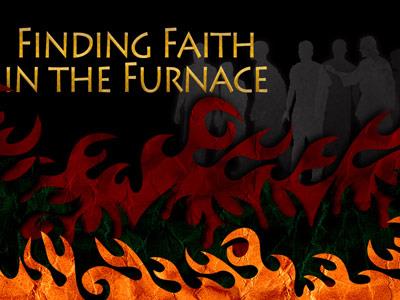-
Four Myths About God’s Judgment Series
Contributed by Jim Butcher on Aug 9, 2010 (message contributor)
Summary: A look at the two foundations and four popular lies about final judgment.
1. Myth: “The line dividing heaven and hell is. . . who claims Jesus’ name.”
- Matthew 7:24, 26 – “puts into practice,” “does not put them into practice.”
- Focus: empty religion.
[a, c, g, o]
- There is a lot of empty religion out there.
- And, as I’ve shared before, one of the biggest myths that leads to an empty religion is the idea that I can have some vague “belief” in Christ that is completely disengaged from any obedience to Christ and I’m fine spiritually.
- There is just no way to thoroughly read the New Testament and come away with that belief.
- It’s clear that Jesus expects us to follow Him. And as we do that, our lives should bear fruit for God’s glory.
- As Bonhoeffer said, “Only he who obeys believes, and only he who believes obeys.”
- What is the source of this false confidence? A few of the possibilities:
a. Distorted “eternal security” focus that expects no discipleship.
b. Lack of self-examination.
c. A focus on religious activities.
d. Belief that their good works will balance out their sin.
e. Assurance because “I was saved as a child.”
f. Assurance because “I’ve been a member of this church for 20 years.”
g. Failure to recognize that commitment to a denomination or church is not the same as commitment to the Word of God.
Truth: “. . . who practices Jesus’ teachings.”
- This is the concluding idea of the sermon, emphasized repeatedly: put these teachings into practice.
- The difference between the two people here is simple and straightforward: one put Jesus’ words into practice and one didn’t.
- The difference was not that one was aware of Jesus’ words and one wasn’t.
- The difference was not that one heard Jesus’ words and one didn’t.
- The difference was not that one said he believed Jesus’ words and one didn’t.
- The difference was not that one praised Jesus’ words and one didn’t.
- The difference was in the act of putting His words into practice.
- It’s telling to consider how many people simultaneously consider Jesus a great teacher and completely ignore His teachings.
- There are those who agonize over the question “Am I saved?”
- There are those who wonder: how can I make sure I’m “in”?
- There is no need for that uncertainty. Simply and faithfully be someone who wants to know God’s will and to practice Jesus’ teachings.
- Read the Bible as a lifeline.
- We need to be hungry – desperate even – to know God’s will.
- Every choice, we need to ask: what would Jesus have me do?
- Not as one of the options that we’re considering, but as our de facto action.
2. Myth: “What matters most in my life is. . . what’s seen.”
- Matthew 7:24, 26 – “rock,” “sand.”
- Focus: superficial.
[e, f, h, i]
- Example #1: Materialism.
- We certainly have a focus in our society on the way that things appear.
- We are probably the most materialistic culture in history.
- The material blessings that we have access to are certainly thing we should be thankful for, but we need to recognize that there is a spiritual danger there.
- The danger is simply that when we focus so much on what is seen, you can miss what’s more important.
- Example #2: Fame.
- Another way we are superficially focused on what you can see is in our quest for fame.
- We’ve seen a significant spike among younger Americans in those who think an important life goal is to become famous.
- Of course, we don’t think about the destructive power that fame has in their lives – we just think it’d be cool to be well-known.
- So many kids’ show today are about fame: Hannah Montana, Big Time Rush, iCarly.
- It’s not that the wrong way looked bad.
- In fact, both of the houses here look fine outwardly.
Truth: “. . . what’s unseen.”
- Luke 6:48-49 – “dug down deep and laid the foundation on rock,” “without a foundation.”
- The parallel passage in Luke mentions the foundational work that’s done.
- The thing about foundation work is that once the building goes up no one sees it anymore. Because no one is impressed by it the way they would be by, say, a big-screen TV, it’s easy to think that’s it’s not essential.
- It’s telling to watch how people respond to the storms of this life.
- You have two people side-by-side, let’s say 35-year-old mothers of two. Each faces a serious illness with one of her kids. One ends up with a divorce and a serious need for a therapist while the other endures the trial not without pain but nonetheless with hope and strength.

 Sermon Central
Sermon Central



